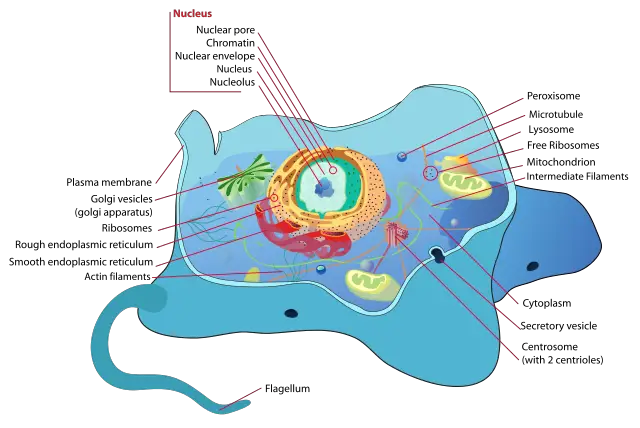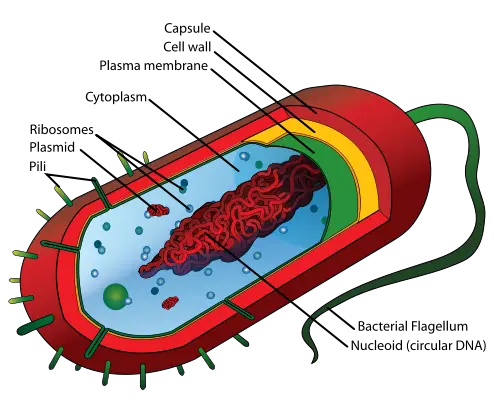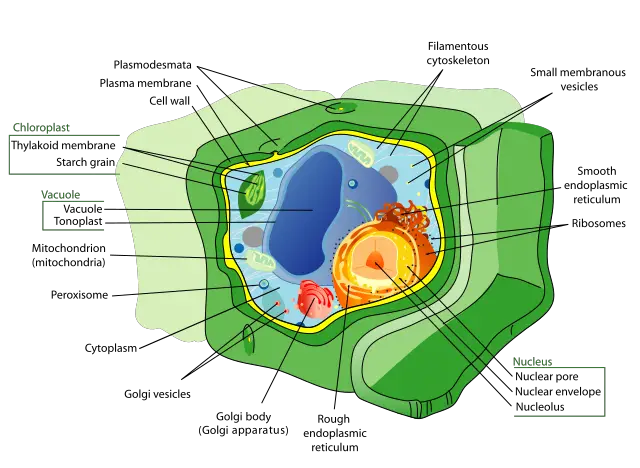What is the structure of a cell?
When cells were first discovered, biologists believed that they were uncomplicated, simply a cell membrane containing liquid, including some particles that float within the liquid.
However, it is now known that cells have a complex structure that allow them to do their jobs.
Structures within and around the cell include the cell wall/cell membrane, cytoplasm, endoplasmic reticulum (either smooth or rough), a nucleus and nucleolus, chromatin, ribosomes, mitochondria, microtubules, Golgi apparatus, centrioles, and lysosomes.
Although there are many different kinds of cells, which come in various sizes and shapes to adequately perform their different functions, this section will describe a general idea of the basic structure of a cell.

What are the different parts of the cell?
Cells generally have three sections: the cell membrane or cell wall, the nucleus, and the cytoplasm. The cytoplasm is the fluid that fills the cell within the cell membrane, and it contains numerous smaller particles within it that perform the functions of the cell.
The Cell Membrane
The cell membrane is made of plasma, and it forms an enclosure, or wall, around the entire cell. Its purpose is to hold in the cytoplasm and smaller particles inside the cell, in addition to regulating which substances can enter and leave the cell.
The cell membrane has two layers (called a bilayer) of phospholipid molecules, or tiny compounds of the element phosphorous, that attract or repel water.
The structures within the cell membrane, such as channels for substances to flow through, are made of proteins.

The Nucleus
The nucleus and nucleolus is also found in the cytoplasm, but as its function is very different from the rest of the organelles, it has its own section. The nucleus has its own cell membrane, called a nuclear membrane, which separates it from the rest of the cytoplasm.
The purpose of the nucleus is to control the functioning of the cell, much like the brain controls the functioning of a human or animal. The fluid inside the nuclear membrane is called nucleoplasm.
Inside the nucleus, DNA (genetic material) is stored on chromatins. This information tells the cell how to form, what shape and size to grow into, and what functions to perform.
There is also a nucleolus inside the nucleus, a structure that contains RNA (another kind of genetic material made from DNA). Ribosomes that exist in the cytoplasm of the cell are created in the nucleolus.

The Cytoplasm
The smaller particles in the cytoplasm are called organelles (which means little organs), and they include the endoplasmic reticulum (either smooth or rough), ribosomes, mitochondria, microtubules, Golgi apparatus, centrioles, and lysosomes.
The cytoplasm of a cell is a fluid substance that has a consistency similar to gelatin. This gelatinous fluid helps mediate chemical reactions within the cell, so that functions of the cell can be performed within and between each organelle.
The functions of the process of cell division also occur in the cytoplasm. Materials such as nutrients, water, and genetic material move throughout the cytoplasm through a process called diffusion.
Questions:
- What are the three parts of the cell?
- What is the cell membrane made of?
- What is the purpose of the nucleus?
- What is stored in the nucleus?
- How do substances move throughout the cytoplasm?

Answers:
- The three parts of the cell are the cell membrane, cytoplasm, and nucleus.
- The cell membrane is made of plasma, or a phospholipid bilayer.
- The nucleus is the control center of the cell, like the brain.
- Genetic material is stored in the nucleus.
- Substances move throughout the cytoplasm through diffusion.